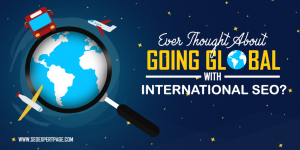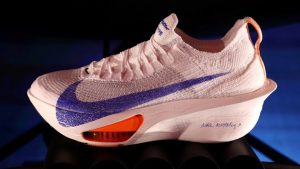
Releasing an ebook or selling a service is a great achievement. But a lot of digital entrepreneurs believe that’s all there is to being in business.
Having a business means more than having a single product. It means committing to continuous sales funnel development, and to being thoroughly invested in the success of your consumers over the long haul.
Yes, the risks are huge. The rewards, however, are even greater.
If you don’t have a business – if all you have is a single product – you’re putting your financial future in jeopardy. What will happen if, all of a sudden, demand dries up for your product?
Maybe you’ve saturated your market, or maybe changes in your industry make your product obsolete, but if you’ve staked your claim on a single product, you could lose it all in a day. On the other hand, a fully-fledged business means that, even if interest in one of your products disappears, you’ve still got a stable of great offerings and a diverse group of customers to buy them.
Below, I’ll help you determine if you have a product or a business. If you have a product, I’ll talk about the key steps you need to take in order to change your thinking from a salesperson of a product to an entrepreneur in business.
We’ll also touch on what you can do if you want to function like a business, but don’t want to jump in head first just yet.
Product vs Business
Before we dive in, a little definition magic:
Per Merriam-Webster, a product is “something that is made or grown to be sold or used.”
According to Wikipedia, a business is “an entity involved in the provision of goods and/or services to consumers.”
The difference is subtle but the key is in continuous process. A business provides goods and/or services to consumers. A product is a good and/or service provided to a consumer.
For example, many of the items on Kickstarter and eBay are products. They aim to sell a single thing. A great example of this is the Toasteroid. The makers of the toaster are focused on this one product. Even their website is entirely devoted to just this product.
An Etsy shop, however, can be a fully-fledged business. Wallplays, for example, sells more than 200 different kinds of wallpapers. Their brand isn’t dedicated to only one type of wallpaper, which is important in an industry where design trends can change in a minute. Instead, they diversify their offerings by selling repositionable, colorful, and modern wallpaper to suit all lifestyles and decor preferences.
At this point, you may already have a good idea of whether your endeavors constitute a product or a business. But if you’re still on the fence, consider the following questions:
Do you have a plan for developing, releasing, and promoting new products to capitalize on your previous success?
Carter Wigell, writing for Ideator, shares MP3 players as a great example of an industry where individual products grew into full businesses. Noting that Microsoft’s Zune player preceded the transformative iPod – but failed to ever gain real market share – Wigell suggests that “[Apple’s] delivery, ecosystem, marketing and macro trends of consumer behavior were timed perfectly.”
Not only was Apple able to identify and capitalize on opportunities that Microsoft missed, they were able to leverage the business they built around the iPod to transition into tablets, smart watches and more.
Even if the tech giant’s sales are cooling now, the company still managed astronomical revenue growth from $ 8 billion in 2004 to more than $ 230 billion in 2015.
You definitely can’t say that about the Zune.
Do you have lead capture mechanisms in place?
Whether you have a product or a business, you know that sales don’t just happen. Before they hit the “Buy” button, buyers have to first recognize that they have a need, identify alternatives to evaluate, and carry out their evaluation.
Prospective customers naturally drop off during this process, which is why it stands to reason that the more leads you can capture and market to over time, the more sales you’ll ultimately generate.
The data backs this up. According to Forrester Research, “Companies that excel at lead nurturing generate 50% more sales ready leads at 33% lower cost.”
Yes, a single product can have lead capture mechanisms in place. However, it’s the forward-thinking, long-term kind of investment into developing these systems – not to mention the sales funnels behind them – that suggests a transition from single product supplier to full-on business.
Do you have an established sales funnel?
So, you’re gathering leads. That’s great. But what are you doing for them once you’ve corralled them into your sales funnel?
Neil Patel explains why having a carefully-crafted sales funnel is so important:
“No matter how they get to you, as many as 73% of leads are not even ready to be sold to. Even of the ones that are qualified, half of them aren’t ready to buy. That puts the odds against you right out of the gate.
Companies who properly nurture their leads see a 450% increase in qualified prospects. And those who take the time to nurture and grow those customer relationships, see 50% more sales at a 33% lower cost.”
Investing in creating a sales funnel to nurture the leads you’ve generated suggests that you’re thinking about more than racking up single-product sales. You’re thinking about your customers, how you can support them, and how you can help them make decisions – and that’s the kind of thing a business does.
Certainly, these aren’t the only questions that’ll distinguish between business and product. However, if you look at the underlying thinking found in the answers above, it should ultimately become clear which side of the coin your company falls on.
What to do if: You have a product, but you want a business
Now, let’s say you’ve got a single product, but you want to become a business in order to take advantage of some of the benefits highlighted above.
Here’s what you need to do, following the classic “5 Ws” of traditional journalism:
- Decide on your main overall mission. This will guide every product, process, and service that you provide in the future. Remember that mission statements are declarative of value-propositions. (Who and Why?)
- Identify the business processes that you will put in place to provide the value you propose. (How?)
- Determine and design the best products that can channel this value. (What?)
- Plan out the optimal strategy for continuous delivery of products and services. (When and Where?)
If you’re stuck figuring out what your value proposition is, ask yourself, “What problem am I trying to solve with my product?” Chances are you can extrapolate that single challenge into a broader business model, expanded with different products, channels of distribution, target consumers and more.
What to do if: You’re not ready for a business
If you’re not ready to jump into building a full-blown business, you can still apply some of these foundational business principles to your current product to ensure its success.
Instead of determining an overall mission, just declare the value-proposition of your product. What needs are being met by the product? How is the product alleviating pain points?
Next, make sure the product is designed to optimally provide the value you’ve just defined. If it’s an ebook, is it in the correct format? Can it include supplemental materials? Does it lack any information or insight? Can it be further researched? If it’s a service, does the format help customers? Does it provide a “bookended” benefit (meaning, its main value ends with the service), or does it provide ongoing benefits?
Plan out the optimal strategy for product awareness and delivery. Do you need a lead magnet? Can you utilize paid ads? Can you garner some free publicity? Can you hook into specific communities online? Figure out what you need to do to get your product into the hands of people that need it – then do it!
Wrap
Whether you have a business or a product, never forget that consumers seek real value. Your goal should always be to provide that value. Who knows, if all you have is a product right now, you may eventually be able to transform your offering into a fully-fledged business that protects your financial position by delivering continuous value for your audience.
Where is your current product on this spectrum? If you don’t have a true business backing your single product, what steps will you take to expand its value? Leave me a note below in the comments with your thoughts.
Images: Pat Castaldo, Dean Hochman, Creative Commons
Business & Finance Articles on Business 2 Community(42)









